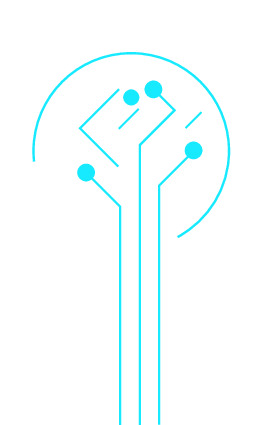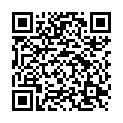|
|
|
| Module code: NE2111.CIP |
|
|
4V+4P (8 hours per week) |
|
8 |
| Semester: 1 or 2 |
| Mandatory course: no |
Language of instruction:
German |
Assessment:
Mündliche Prüfung
[updated 14.10.2015]
|
BMT1934 (P213-0158) Biomedical Engineering, Master, ASPO 01.04.2014
, optional course, medical/technical
NE2111.CIP (P213-0158, P213-0159) Neural Engineering, Master, ASPO 01.04.2020
, optional course, medical/technical
NE2111.CIP (P213-0158, P213-0159) Neural Engineering, Master, SO 01.10.2025
, optional course, medical/technical
|
120 class hours (= 90 clock hours) over a 15-week period.
The total student study time is 240 hours (equivalent to 8 ECTS credits).
There are therefore 150 hours available for class preparation and follow-up work and exam preparation.
|
Recommended prerequisites (modules):
None.
|
Recommended as prerequisite for:
|
Module coordinator:
Prof. Dr. Dr. Daniel Strauß |
Lecturer: Prof. Dr. Dr. Daniel Strauß
[updated 25.03.2020]
|
Learning outcomes:
Die Studierenden können bei Cochleaimplantat (CI) Patienten eine patientenbezogene
Audiometrie und ein grundlegendes CI Fitting selbstständig durchführen. Die Studierenden
können individuelle Sprachverarbeitungsstrategien auswählen und anwenden. Sie sind der
Lage audiologische Beratungen und Schulungen durchzuführen. Die Studierenden können
die Grundlagen medizinischer Psychologie und Soziologie der Hörstörung analysieren und
bewerten. Sie werden weiterhin in die Lage versetzt, Kommunikationsstrategien mit
Hörgeschädigten klinisch anzuwenden und lernen Versorgungsstrategien kennen. Die
Studierenden lernen weiterhin den Ablauf einer CI Operation kennen.
[updated 15.10.2015]
|
Module content:
1. Pathophysiologie des Gehörs (klinische Aspekte)
1.1 Formen der Schwerhörigkeit
1.2 Komorbiditäten und Krankheitsbilder (Verspannung, Tinnitus Meningitis, Akustikus
Neurinom, AVWS, Hyperakusis, Phonophobie)
1.3 Klinische Diagnostik
2. Psychologie der Schwerhörigkeit/ Ertaubung
2.1 Funktionen des Gehörs
2.2 typische Verhaltensweisen Hörgeschädigter
2.3. Psychopathologie der Schwerhörigkeit
3. Soziologie der Hörschädigung
3.1 berufliche Auswirkungen der Hörschädigung
3.2 soziale Folgen der Hörschädigung
4. Kommunikationsformen
4.1 Kommunikationstaktiken ( Absehen, Kombination, Gebärden)
4.2 Copingstrategien. Hörtaktik und Outing
4.3 technische Hilfen ( kom anlage, Telefon)
4.4 rechtliche Grundlagen der Hörversorgung
5. Versorgungsmöglichkeiten bei Hörgeschädigten
5.1 Noiser
5.2 Hörgerät und Kombigerät ( Hörgerät und Noiser)
5.3 Powerhörgerät
5.4 Cros-Versorung und Bi-Cros-Versorgung
5.5 Cochlea Implantat ( normal, Hybridsystem)
5.6 Vibrant Soundbridge
5.7 Bone Bridge
5.8 BAHA
5.9 Hirnstammimplantat (ABI) und Mittelhirnimplantat (AMI)
6. operative Therapie der Ertaubung
6.1 Phasenmodell der CI Versorgung
6.2 Grundlagen der CI Rehabilitation
6.3 Reha Ziele
7. Die CI-Anpassung
7.1 Grundlagen ( Anpassstrategien, Impedanzmessung etc)
7.2 Integrierte Anpassungstechnik
7.3 Praktische Übungen
8. Sonderformen der CI Anpassung und Versorgung
8.1 Kinderversorgung
8.2 SSD Single side deafness
8.3 Tinnitus und CI
8.4 CI und Schwindel ( Mb Meniere)
8.5 Facialisirritation, Cephalgie
9. berufliche Anforderungen an das CI
9.1 Eingliederungsmodelle
9.2 Nachsorge
10. Umgang mit Hörgeschädigten
10.1 Audiotherapie
10.2 Sicherung der Kommunikation
11. CI-Professional im Therapeutenteam
11.1 Logopäden, Audiotherapeuten, Psychologen
11.2 HNO Ärzten
11.3 Sozialarbeitern
12. Nachsorgesysteme
12.1 Remote fitting system
12.2 ambulante Nachsorge
12.3 Trackingintervalle
12.4 Selbsthilfeverbände
13. Besuch einer CI Operation an HNO Klinik des UKS
[updated 15.10.2015]
|
Teaching methods/Media:
Tafel, digitaler Projektor, Software
[updated 15.10.2015]
|
Recommended or required reading:
A. S. Bregman "Auditory Scene Analysis", MIT Press, 2001
J. W. Hall III "Handbook of Auditory Evoked Responses", Allyn & Bacon, 1992
D. S. Levine "Introduction to Neural and Cognitive Modeling", Lawrence Erlbaum Associates, 2000
Jorge Rosner "Peeling the Onion: Gestalt Theory and Methodology", Gestalt-Institute of Toronto, 1990
S. Grossberg, K. K. Govindarajan, L. L. Wyse, and M. A. Cohen "ARTSTREAM: A neural network model of auditory scene analysis and source segregation", Neural Networks, 17, 511-536, 2004
S.N. Wrigley and G.J. Brown "A computational model of auditory selective attention" IEEE Transactions on Neural Networks. 15: 1151-1163, 2004
D. L. Wang "Primitive Auditory Segregation Based on Oscillatory Correlation" Cognitive Science 20: 409-456,1996
M. Clark "Cochlear Implants" Springer, 2003
M. Clark "Introduction to Audiology", Allyn & Bacon, 2002
D. Marr "Vision", Henry Holt & Company, 1982
[updated 15.10.2015]
|


